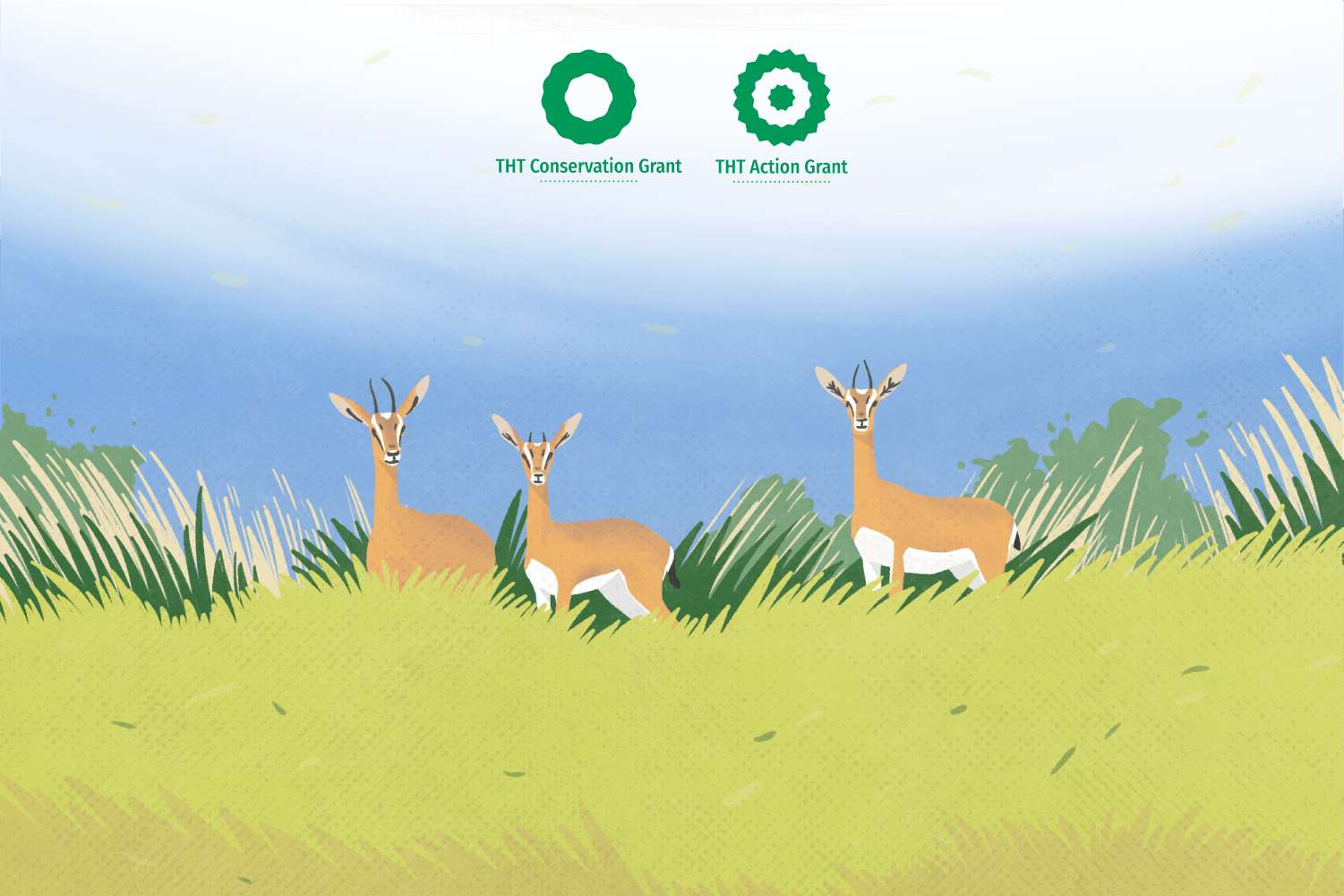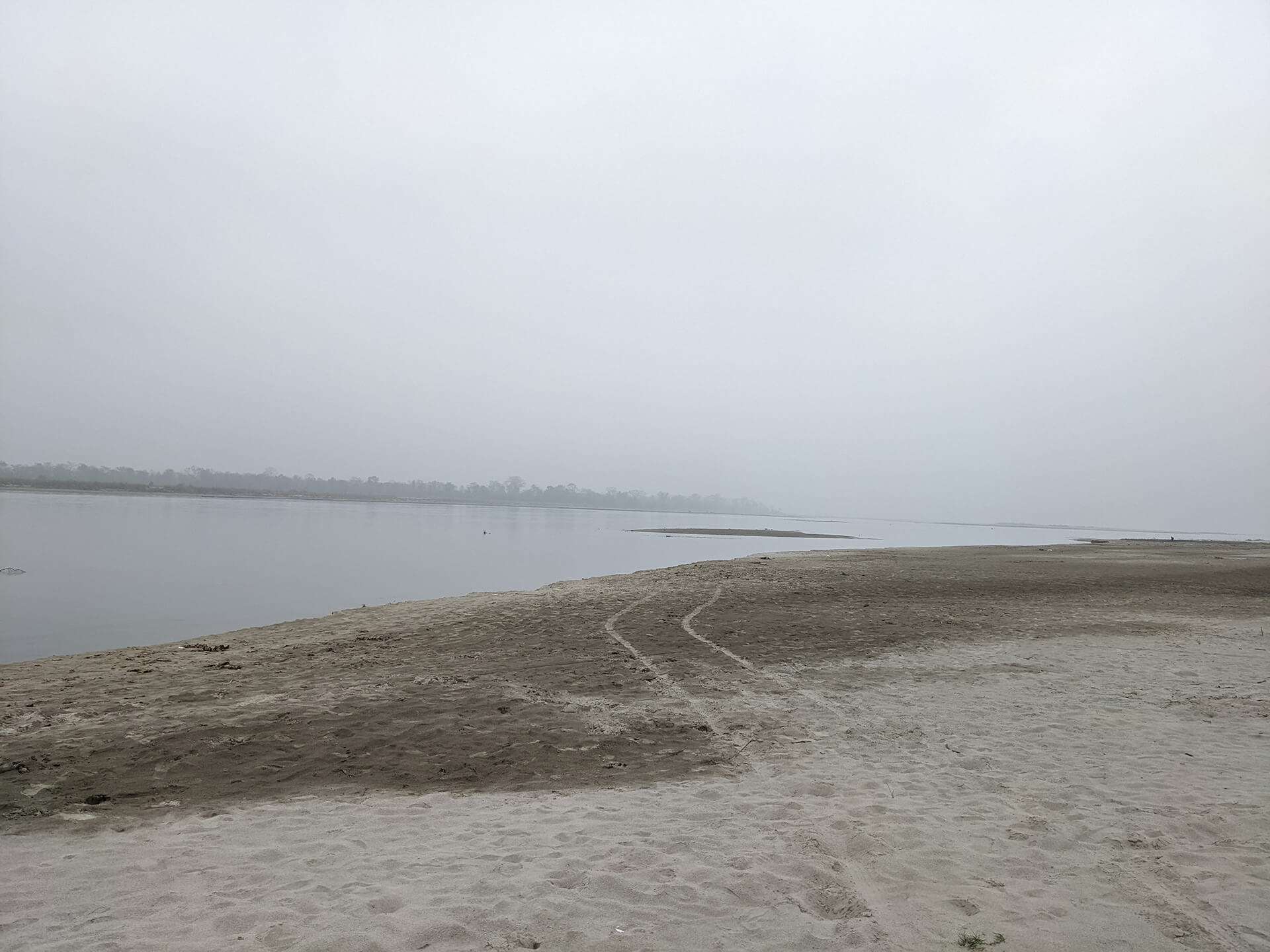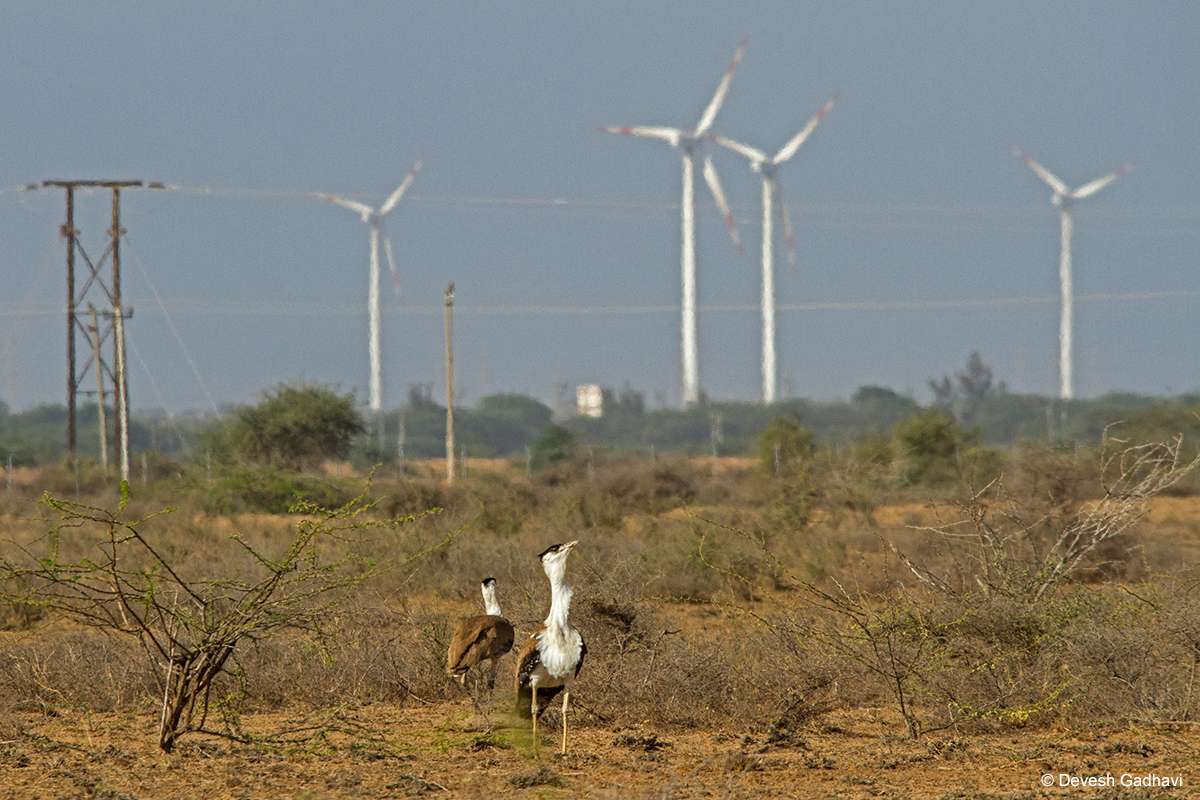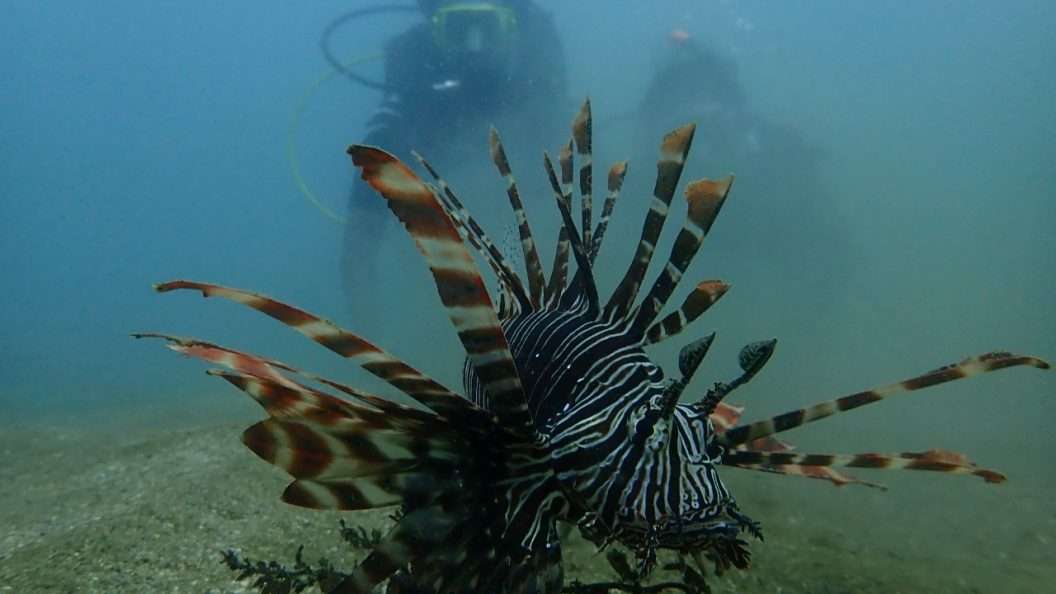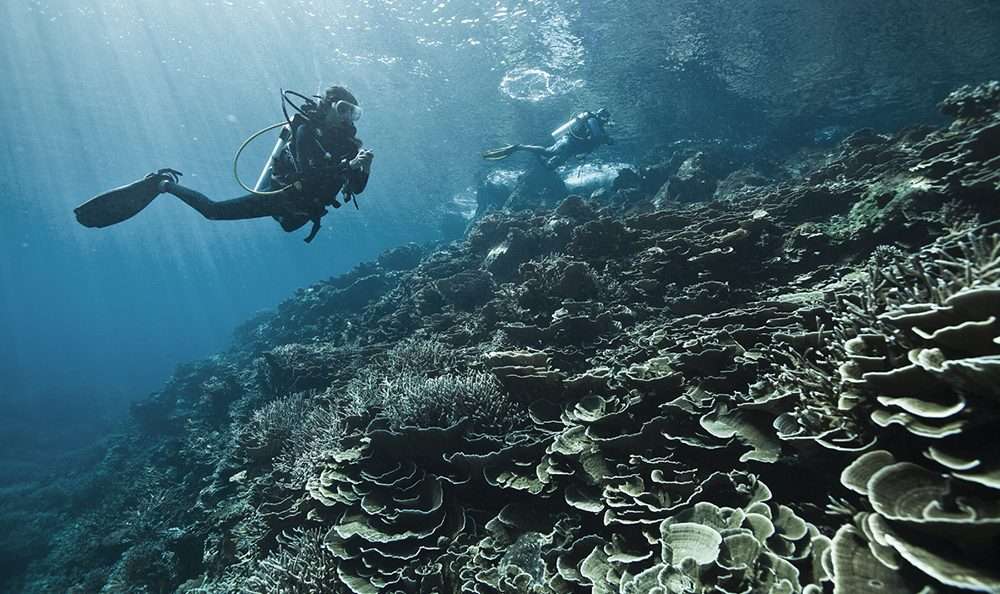Sejal Mehta
The afternoon sun shone gently on the rolling steps of the tea estate. The employees of the estate picked tea leaves, their wrists performing deft, firm twists to pluck the leaves before dropping them precisely into the basket they were carrying on their backs. In January, the weather was cold in Valparai, Tamil Nadu, and the whole landscape seemed to basking under the warm sunlight.
A seemingly tranquil scene, but only just.
In the distance, approximately 100 metres away, a herd of wild elephants made their way across the hill. They stopped here for a quick graze, paused there for a mud bath, their muscular trunks throwing mud onto their backs lighting up small particles in the sunrays.
Once every few minutes, the tea pickers would throw a quick glance over their shoulder, ensuring a safe, respectable distance from the herd. “That’s the matriarch, says Vijay Mohan from the Rapid Response Team of the Forest Department. “The shape of her tail gave the herd its name,” he says. I did not miss the tone of affection in his voice, as he told us about the animals that have been at the centre of a volatile conflict and coexistence struggle with the local human population for more than 100 years on the Valparai Plateau.
![]() Valparai sits over a 220 sq km area, has over 120 elephants and a population of over 70,000 people. There are around 7-8 national and international companies spread over 54 tea and coffee estates. It’s only natural that they will encounter each other, and not always peacefully.
Valparai sits over a 220 sq km area, has over 120 elephants and a population of over 70,000 people. There are around 7-8 national and international companies spread over 54 tea and coffee estates. It’s only natural that they will encounter each other, and not always peacefully.
Valparai sits in a unique position – it is surrounded on all sides by protected areas – Anamalai Tiger Reserve, Parambikulam Tiger Reserve and Eravikulam National Park. This once prime rain forest plateau is now a fragmented landscape. The Anaimalais region hosts the second largest population of wild Asian elephants in India, outnumbered only by the neighbouring Nilgiris. These characteristics come with their challenges – a 220 sq km area, over 120 elephants and a population of over 70,000 people. There are around 7-8 national and international companies spread over 54 tea and coffee estates in Valparai. It’s only natural that they will encounter each other, and not always peacefully. In fact, the book "The Anamalais" published in 1942 by CRT Congreve, indicates elephants pulling out cots from an assistant manager’s bungalow in one of the estates in TATA Coffee. This documents conflict since the British rule. Today, in India, there are annually around 500 human deaths, and around 100 elephant deaths.
Nature Conservation Foundation (NCF) was awarded the Strategic Partnership Grant by The Habitats Trust (awarded annually to organisations working at grassroot levels) in 2020, to help strengthen their effective long-term interventions in the region. The team, which has been working here for 20 years, identified the main reason for conflict – a lack of knowledge on elephant movement on any given day. They started to dispense the locations of these animals to people – by word of mouth in 2002, through local news channels in 2004, and finally in 2011, through the game -changing early warning systems. Every day, the NCF office shares the exact locations of the elephants to people who reside within a two kilometre-radius via SMS and phone calls. This monitoring is critical to avoid encounters with the elephants, the organisation has three people dedicated to this role. Along with the members of the forest department’s Rapid Response Team, these people track around 120 elephants. The trackers use an app Open Data Kit. This information is relayed to the NCF office, where Chitra Arumugham, organises it into a system based on location and sends out text and voice call alerts to locals who have subscribed to the service. NCF has also installed mobile-phone operated alert lights, which glow a bright red if elephants were in the vicinity.
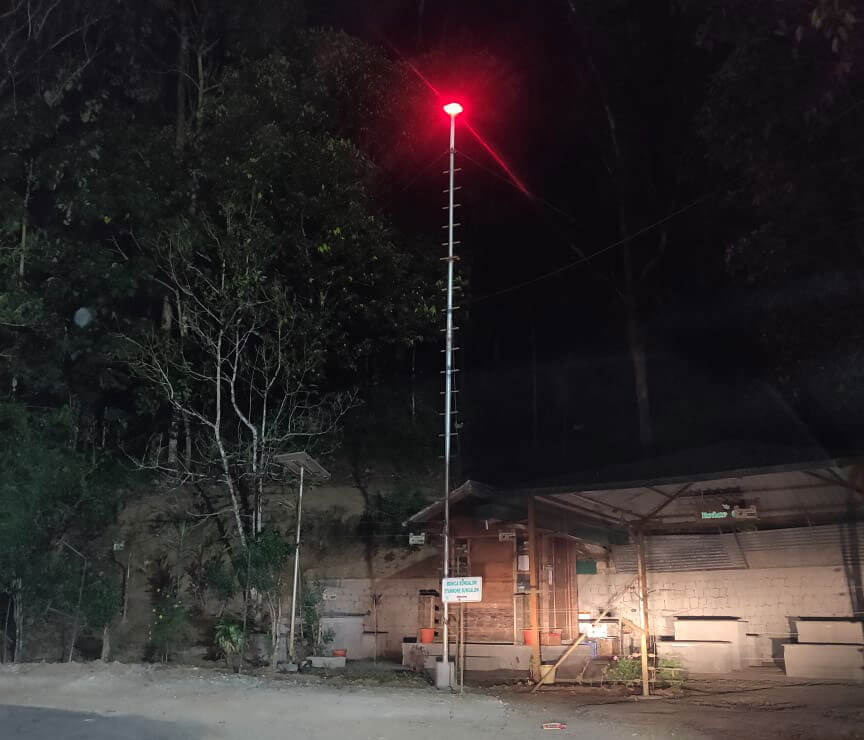 Among the multiple measures that NCF is implementing, the mobile-phone operated alert lights it has constructed has been arguably the most effective. These lights glow a bright red if elephants were in the vicinity, alerting locals to avoid those routes.
Among the multiple measures that NCF is implementing, the mobile-phone operated alert lights it has constructed has been arguably the most effective. These lights glow a bright red if elephants were in the vicinity, alerting locals to avoid those routes.
With the help of The Habitats Trust grant, new introductions in the form of street plays and storytelling brought understanding to the estate workers and the owners. A plan to introduce announcements in public transport is also underway. Currently, they have 4,700 subscribers, 2,000 voice messages and around 35 alert lights. The forest department has strengthened its role with a Rapid Response Team, an Elephant Cell and an anti-depredation squad. Ananda Kumar, who works with NCF says, “Around 120 elephants (including the regular herds) use this landscape throughout the year and the months from September to March are usually tense,” he says. “During this peak season, presence and movement peaks, and elephants look for food in ration shops, noon-meal centres or in residential localities as part of their exploration and secondary adaptations. Hence, we see more damages to property during this particular period.” Meaning there could be clashes even when humans don’t actively run into them. And there are a few. Homes have been partially demolished by herds, with the people hiding inside, waiting for them to leave. The team at NCF has had to go and douse literal fires between man and beast. In Hassan, the conflict is intensified many-fold as there are economic losses from crops combined with a history of elephant capture.
On the other hand, there have been instances where people have stood up for the elephants if they were under threat by authorities. A much-loved elephant in Hassan, for example, was saved from a wrongful capture by the sheer will of the people. “That was quite a heartening day,” remembers Ganesh Raghunathan. That particular elephant is stuff of legend, he says, smiling as he remembers the powerful creature. “Elephant behaviour also depends on their past interactions with humans,” says Raghunathan. “They remember if they were positive or negative.” In Valparai, at least, there is no loss of crops as tea doesn’t form a part of their diet, so people are not actually hostile towards elephants. But as Kumar points out, “if there is constant threat to life to them and their families, they will be understandably frustrated.”
Just as well then that in the last year and a half, while there has been loss of property, there have been zero deaths in Valparai.
 New introductions in the form of street plays and storytelling brought understanding to the estate workers and the owners
New introductions in the form of street plays and storytelling brought understanding to the estate workers and the owners
This is a cautious achievement, but one that has to be continuously worked towards, and in that, NCF has proved that time spent on a conservation site is one of the most powerful ways towards impact. Raghunathan moved to Valparai from Bangalore a decade ago while Mysore-based Kumar has now been a familiar of the landscape for 20 years. The team is now part of the local fabric. Raghunathan’s day usually starts with calls from locals, and these range from conflict situations, to information sharing to even just greetings. He spends his day fighting fires (not just of the elephant kind, but other animals and situations as well) so there are no negative feelings toward any wildlife, not just elephants. Chitra’s voice, alerting locals of elephant movement, has become part of a working day, and she remembers how when she was on leave, people called in to ask why her voice was not the one they heard that day. Their consistent presence has led to them turning partners with the locals, where information about elephant movement also comes in from their subscribers. There are more interventions being planned, from constructing spaces for ration and other items out of the reach of elephants, to public announcements in public transport systems.
The road ahead seems long, but hopeful.
For now, consistent interventions by all teams, the local people’s desire to coexist despite the problems, and the forest department’s ready involvement during and in the aftermath of conflict seems to be holding up Valparai’s precarious co-existence tightrope.



